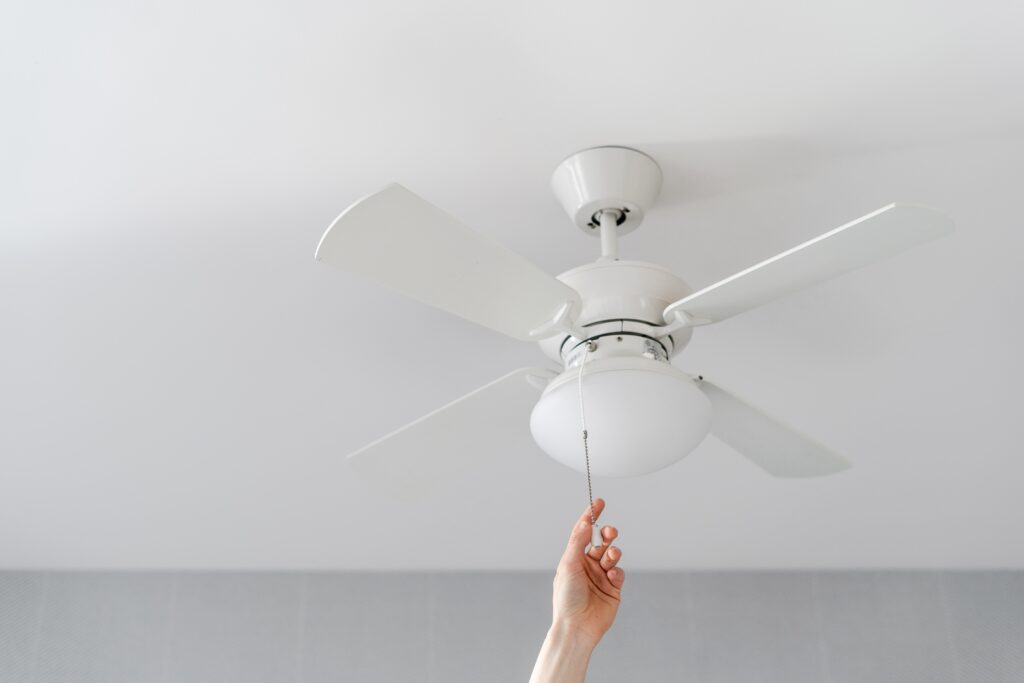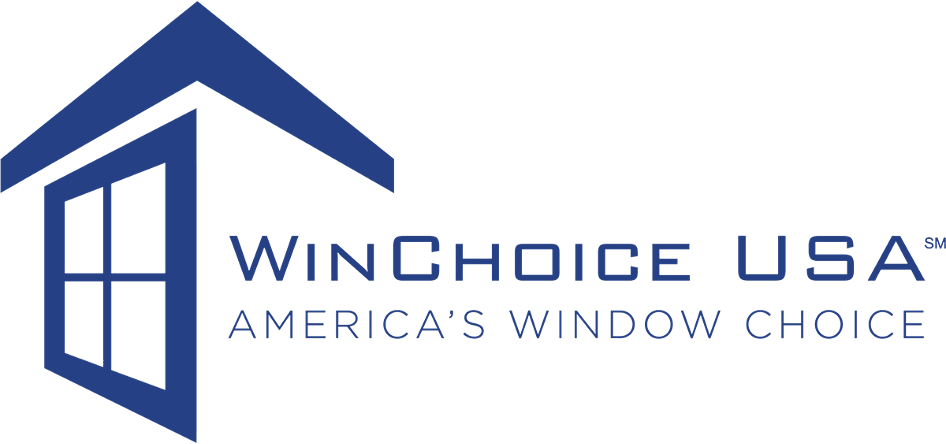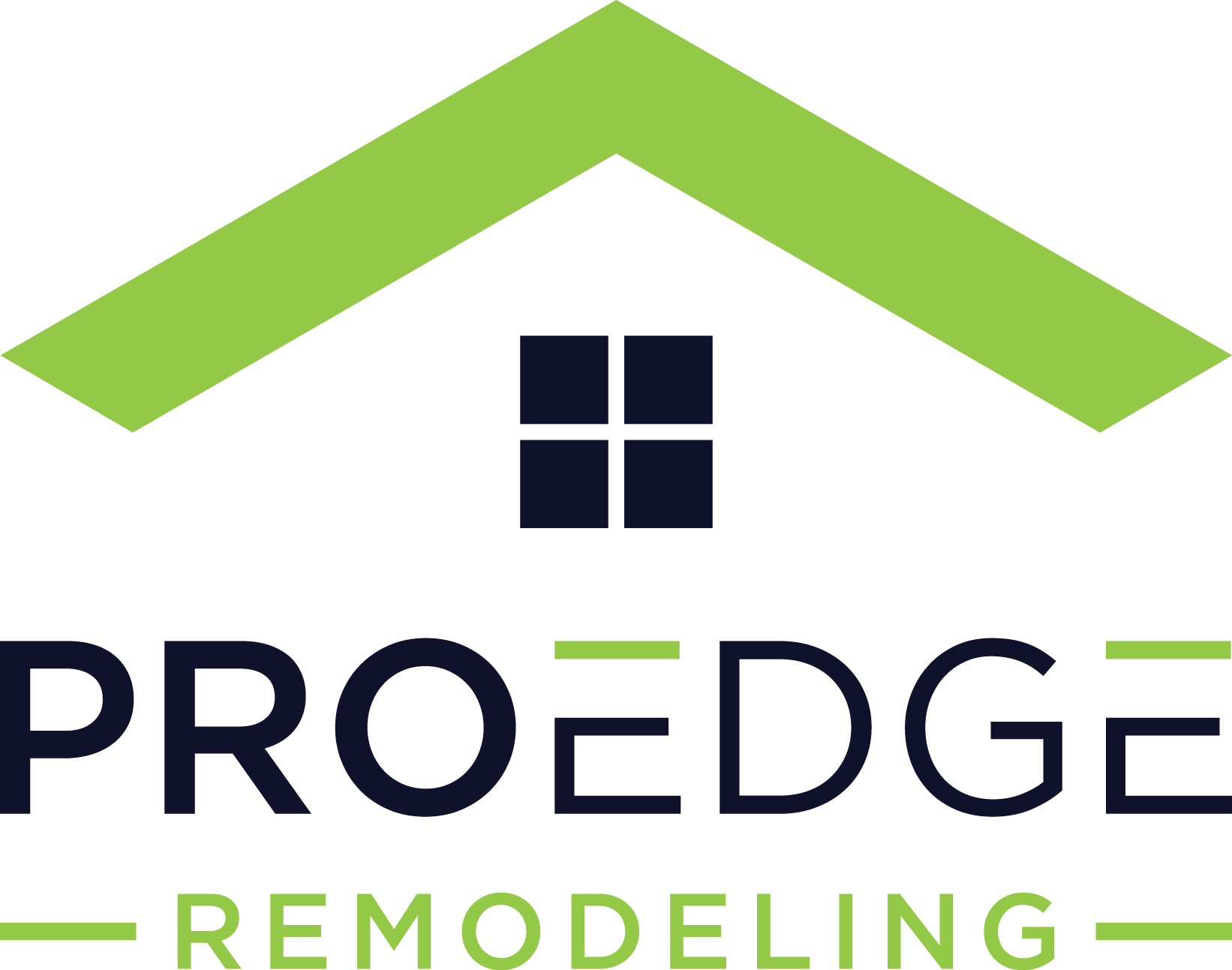Understanding Ceiling Fan Direction

Did you know your ceiling fan direction can increase your home’s energy efficiency? The right direction can help your home feel comfortable all year long.
Ceiling fans use much less energy than your HVAC system, making them an affordable option to cool or warm your home. Understanding the right fan direction in the summer and winter can benefit your energy usage, bills, and overall comfort.
Ceiling Fan Direction for Summer
During the summer, you likely rely on your air conditioning to cool your home’s temperature, but a ceiling fan could reduce how much you use the AC. On average, an AC unit uses 3,000 – 3,500 watts per hour, and ceiling fans use 15 to 90 watts per hour.
During hotter months, your ceiling fan should rotate counterclockwise. This allows it to push cooler air to a level where you can feel it.
If you run your ceiling fan at a high speed, you can typically increase the temperature you set on your thermostat to reduce AC usage.
To determine if your ceiling fan is going in the right direction, stand directly underneath it. You should feel a rush of air from the fan if it’s going in the proper direction.
Ceiling Fan Direction for Winter
In winter, you should reverse your ceiling fan blades to run clockwise. Cold air is denser than warm air, so warm air naturally rises.
When you reverse the blades, the warm air is forced down to your level, so you can feel comfortable and not use your HVAC system as much. Unlike in the summer, you’ll run your clockwise blades at the lowest speed. This ensures the warm air gets to you without causing a cold air draft from the fan speed.
Using your ceiling fan in reverse is especially important if you have vaulted ceilings. With much more room for hot air to rise, your furnace must work harder. The ceiling fan, however, pushes the warm air down and helps lower your heating bills.
Ceiling Fan Direction for Specific Rooms
While the standard ceiling fan rules change from winter to summer, there are some exceptions for specific rooms:
- Dining rooms in summer: Keep your fan on low or medium. The highest setting can cause your food to cool too fast.
- Outside: If you have a ceiling fan on your porch, run it on high speed counterclockwise year-round unless you have very cold winters. The circulation will keep your porch cool and keep the bugs away.
- Home office or other area with paperwork: If you have a lot of paperwork out, keep your fan at low to medium speed. The highest speed will have you chasing paperwork all over the room.
- Vaulted ceilings: Fortunately, you don’t have to do a ceiling fan direction switch if you have vaulted ceilings. They are set high enough that you likely won’t feel the ‘wind chill’ from the counterclockwise direction in the summer.
Factors to Consider
When deciding which direction and speed to run your ceiling fan, consider these factors:
- Size of the room: The larger the room is, the larger the fan you’ll need. You may also need to run it at higher speeds to keep the entire room at a comfortable temperature.
- Ceiling height: The lower your ceilings, the lower the speed you can run your fan. A high or vaulted ceiling requires a higher speed, but you generally don’t have to change it throughout the year.
- Personal preference: A high-speed fan cools rooms the most in the summer, but if you don’t care for the wind chill, you may choose to run it at a slower speed.
- AC and Furnace use: How much you use your AC and furnace also determines how much you need your ceiling fans. Proper use of your fans may decrease the need for AC and furnace use and energy bills.
Conclusion
The right ceiling fan direction can significantly impact your home’s comfort and energy usage. Simply using a ceiling fan in summer mode (counterclockwise) at high speed can reduce the time you use your AC while running it clockwise in cooler months can help keep your home warmer.
Check Out Additional HVAC Resources
- R-22: Understanding Changes to HVAC Refrigerant
- Ideal Humidity Level for Your Home
- Thermostat Replacement Cost
Sources

Anna has over six years of experience in the home services and journalism industries and serves as the Content Manager at MyHomePros.com, specializing in making complex home improvement topics like HVAC, roofing, and plumbing accessible to all. With a bachelor’s degree in journalism from Auburn University, she excels in crafting localized, comprehensive guides that cater to homeowners’ unique needs. Living on both coasts of the United States has equipped her with a distinctive perspective, fueling her passion for turning any house into a cherished home through informed, personalized decision-making.
Connect with top-rated local contractors who can help you with siding, roofing, HVAC, windows, and more. Get free quotes from verified professionals in your area today.








